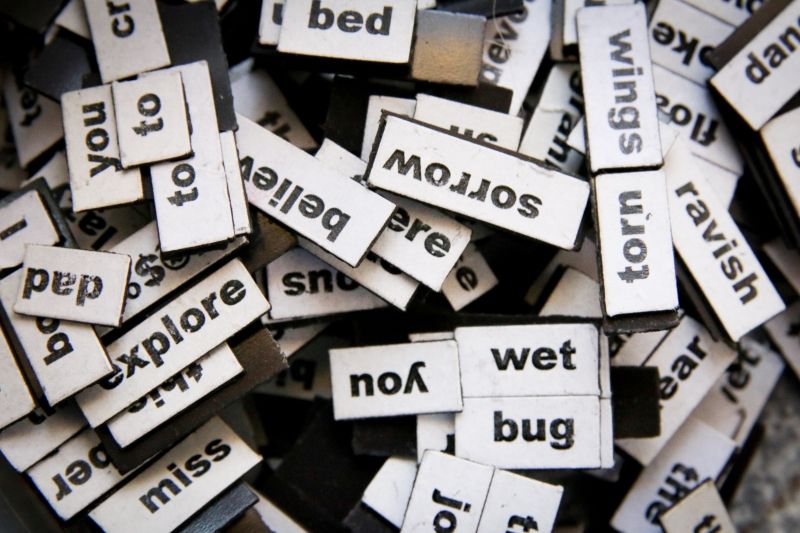How to Improve Your Spanish Vocabulary in 15 Minutes Each Day
You don't need to spend an hour every day trying to learn Spanish; instead, all you really need is 15 minutes of dedicated, quality practice each day.

With roughly 480 million native Spanish speakers and over 540 million speakers worldwide, it's safe to say that Spanish is one of the most spoken (and popular!) languages in the world. Learning to speak Spanish is a completely attainable goal, but as with learning any other skill, you have to be committed to practicing it daily if you want to see consistent improvement.
You might be thinking, 'Well, that makes sense, but what if I don't have a lot of extra time to practice Spanish every day for an hour? How can I still continue to improve?' The great news is this: you don't need to spend an hour every day trying to learn Spanish (although, if you have the extra time and want to practice for an hour every day, whether it's through reading a book in Spanish or watching an hour-long Spanish movie or novela, that's totally fine too!); instead, all you really need is 15 minutes of dedicated, quality practice each day to grow your vocabulary in Spanish and take it to a new level. 15 minutes each day might not sound like a lot of time in comparison to dedicating an hour each day to practing Spanish, but it's more realistic in this fast-paced world of ours. With 15 minutes of quality practice each day, you'll not only make learning Spanish a daily habit, but you'll also have a better chance of retaining the information you've learned, acquiring Spanish much faster and more successfully in the long-term. Here are 5 ways you can improve your Spanish vocabulary daily with only 15 minutes:

1. Read for 15 minutes each day in Spanish
There are so many benefits to reading. For starters, reading in general is a good habit to get into because it stimulates the mind, improves your memory, and reduces overall stress. Reading for 15 minutes each day can also help you to grow your vocabulary and sharpen your language skills and it’s a great strategy to employ if you’re looking to learn another language such as Spanish. Why? Because when you read in another language, you automatically expose yourself to your target language; you can learn new words and phrases as well as see how the words are used in sentences and how the language generally functions overall. It’s even better if you read out loud in Spanish because then you’ll have a chance to hear yourself speaking in Spanish. If you commit to reading 15 minutes each day in Spanish, you may be surprised at how quickly you’ll grow in the language.

2. Watch a short YouTube video in Spanish daily
YouTube is always a great option to turn to when learning a new language, especially one as popular as Spanish. As previously mentioned, there are roughly 480 million native Spanish speakers. With that figure in mind, there’s an excellent chance that you’ll be able to find a native Spanish-speaking YouTuber that you enjoy watching and learning from. The great thing about YouTube is that there are many short videos that are 15 minutes or less that you can watch making it ideal for you to learn and improve your Spanish vocabulary, especially if you don’t have a lot of time. But if time is not an issue for you, there’s always the option of watching a Spanish move or series on Netflix. Here are some great YouTube channels you can learn Spanish from.

3. Listen to some Spanish music
Listening to some music in Spanish on your way to work or while you work out at the gym is another fun way to add words and phrases to your Spanish vocabulary. Whether your favourite genre is salsa, reggaeton, rock, or pop, listening to Spanish music is a fantastic way to memorize new words and learn the language. Through actively listening, you can pick up new words and phrases, hear how they are used with the context of the song, and listen to how the language generally functions and sounds overall. And if you listen really carefully, you may even hear different Spanish speaking accents!

4. Write in a notebook daily for 15 minutes
If you love to write, this tip is especially for you! Start by buying a new journal or find an old one that you’ve never used before and use it as your Spanish journal. Then, each day set a timer and write in Spanish for 15 minutes without stopping. Writing is a useful tool in language learning as it allows you to spill out all of your thoughts (in Spanish, of course) onto the paper, helps you to recall what you already know in Spanish, and ultimately helps you to further develop your Spanish speaking skills. Writing also gives you a chance to process your thoughts in Spanish in a relaxed way and allows you the opportunity to learn new words and phrases and be able to apply them. You don’t need to spend a lot of time writing, but you’ll find that the more you practice writing in Spanish, the more fluent you’ll become in the language as you’ll be able to retain and recall all the words and phrases you already know while learning new ones in the process.

5. Have a conversation with yourself in Spanish
This last point might seem a little kooky, but it’s totally valid: spend 15 minutes or so each day talking to yourself in Spanish. Speaking is arguably the most important component when it comes to the language learning process because it’s basically the primary way that we communicate with each other. Of course, it would be more ideal to practice with a native Spanish speaker every day, but sometimes that’s not always an option. If this is the case for you, then try practicing some self-talk in Spanish. Talking to yourself in Spanish allows you to talk about anything you want, practice the language comfortably, memorize new words and phrases more easily, and help you sound more natural in Spanish, among many other things. It might feel silly at first, but give it a try: you might find that you actually enjoy talking to yourself in Spanish!

Learning Spanish Needs Not Stressfull
At the end of it all, learning a language should be enjoyable, not stressful. There are lots of things you can do each day to improve your Spanish vocabulary that don’t take up a lot of time. All you need is 15 minutes to start with. Do what works for you. And if you need something with a little more structure and accountability to help you get into the habit of practicing Spanish each day, a Speechling coach is a great option as you can practice your listening and speaking skills and get feedback. If you can commit to 15 minutes of practice each day, you might be surprised at how much progress you can make in your Spanish learning journey six months down the road.
